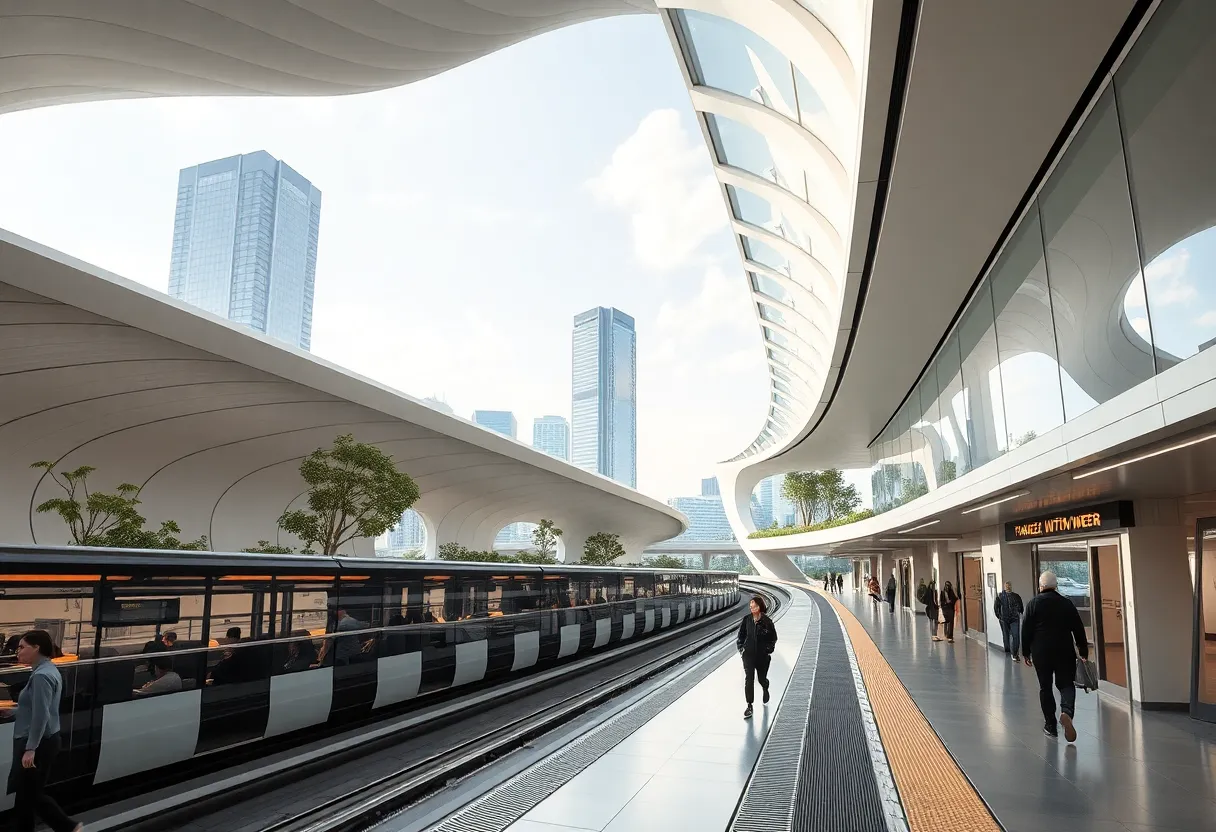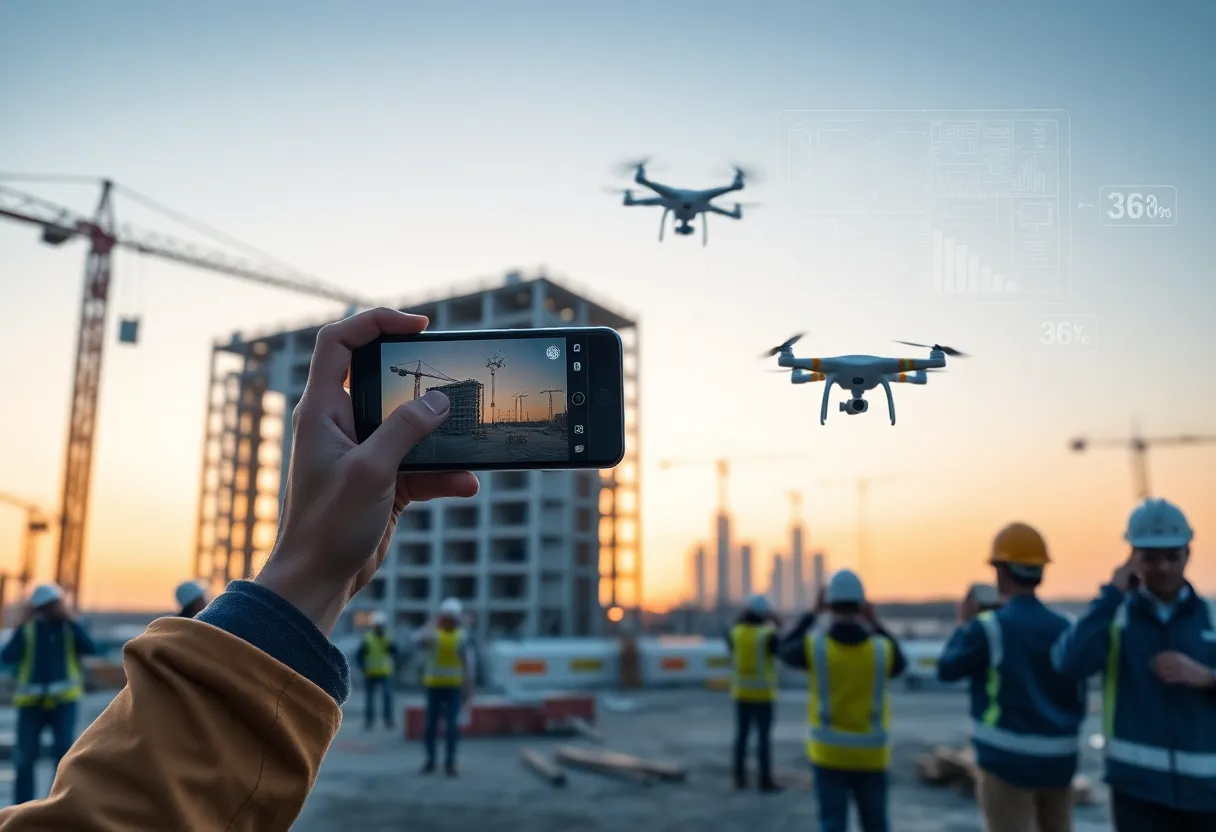News Summary
The Grand Paris Express is set to revolutionize urban transit with a $41 billion investment aimed at expanding the Paris Metro. Adding four new lines and 68 new stations, the project promises reduced travel times and enhanced connectivity. Utilizing advanced technology like GIS and BIM, this ambitious undertaking addresses construction challenges and aims for sustainability, significantly improving urban mobility before the upcoming Olympics.
Grand Paris Express Project Aims to Transform Urban Transit and Construction
The Grand Paris Express project, boasting a budget of $41 billion, is currently the largest infrastructure initiative in Europe. With the aim to enhance connectivity throughout the Paris metropolitan area, the project plans to add four new lines to the Paris Metro. This expansion will include a total of 124 miles (200 km) of tunnels and 68 new stations, fundamentally changing how residents travel in and around the city.
At the height of construction, the project employed up to 10,000 workers simultaneously. This large workforce is essential to manage the scale and complexity of the undertaking, which is designed in such a way that it avoids crossing through central Paris. By redirecting transport flows, it seeks to alleviate congestion and improve accessibility for commuters across the metropolitan region.
Tackling Construction Challenges Head-On
While large construction projects often struggle with a staggering 91.5% failure rate, finding themselves delayed or exceeding budgets, the Grand Paris Express is utilizing a cutting-edge software combination—Geographic Information Systems (GIS) and Building Information Modeling (BIM). This unprecedented fusion of technology is pivotal to the project’s success. GIS serves to accurately map the real-world environment while BIM offers intricate details related to the construction process.
The integration of these two systems furnishes design and construction teams with total visibility, allowing them to view existing utilities as they plan new rail lines. This visibility aids in sequencing construction work efficiently, ensuring the avoidance of conflicts that lead to costly delays and rework. In fact, miscommunications in construction can result in a staggering 12% of project costs attributed to rework due to misunderstandings and poor communication.
Revolutionizing Urban Transport
Tech advancements like the GIS + BIM system are generating what industry experts refer to as data continuity, which streamlines decision-making processes among project teams. The Grand Paris Express represents a pioneering shift in how megaprojects are executed, minimizing construction risks and aiming for improved overall outcomes.
Among the components of this transformative project is the Villejuif-Gustave Roussy Station, which is designed with a cylindrical central shaft to enhance natural lighting and connectivity. This station will facilitate the daily travel of 100,000 passengers, connecting the important Institut Gustave Roussy hospital with nearby residential areas. Notably, the design emphasizes sustainability, employing eco-friendly materials and energy-efficient mechanisms aimed at reducing the environmental footprint.
Enhancing Cultural and Urban Landscape
As part of its community engagement strategy, public art installations will be featured at various new stations, further encouraging cultural dialogue and celebrating the local populations. The Grand Paris Express aims to significantly reduce public transport journey durations by as much as half an hour. This improvement is expected to reshape urban mobility and accessibility for residents across Paris.
Equipped with fully automated and driverless trains running at an average speed of 60 km/h, the network will see 75% of its routes running underground. Advanced tunnel boring machines are set to excavate depths of 30-40 meters, forging new paths beneath one of the world’s most iconic cities.
Keeping to Schedule
Progress on the Grand Paris Express project is underway, with more than 30% currently complete. The anticipation is high for the first segment’s opening, set to coincide with the 2024 Olympics in Paris. Goals for this ambitious endeavor include not only enhancing urban mobility but also significantly reducing carbon emissions in line with sustainable development objectives.
In summary, the Grand Paris Express is not merely an infrastructural project but a transformative initiative designed to revamp urban transit while employing innovative technologies and sustainable practices.
Deeper Dive: News & Info About This Topic
Additional Resources
- Metropolis Magazine: Grand Paris Express Dazzling Keystone
- Webuild Value: Grand Paris Express Artworks
- Vinci: Greater Paris – Inventing the City of the Future
- Designboom: Villejuif-Gustave Roussy Metro Station
- The B1M: Grand Paris Express Video
- Wikipedia: Grand Paris Express
- Google Search: Grand Paris Express
- Encyclopedia Britannica: Grand Paris Express
Author: Construction TX News
TEXAS STAFF WRITER The TEXAS STAFF WRITER represents the experienced team at constructiontxnews.com, your go-to source for actionable local news and information in Texas and beyond. Specializing in "news you can use," we cover essential topics like product reviews for personal and business needs, local business directories, politics, real estate trends, neighborhood insights, and state news affecting the area—with deep expertise drawn from years of dedicated reporting and strong community input, including local press releases and business updates. We deliver top reporting on high-value events such as the Texas Construction Expo, major infrastructure unveilings, and advancements in construction technology showcases. Our coverage extends to key organizations like the Associated General Contractors of Texas and the Texas Building Branch, plus leading businesses in construction and real estate that power the local economy such as Austin Commercial and CMiC Global. As part of the broader network, including constructioncanews.com, constructionnynews.com, and constructionflnews.com, we provide comprehensive, credible insights into the dynamic construction landscape across multiple states.





